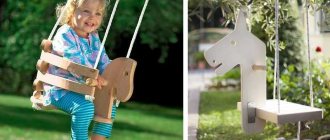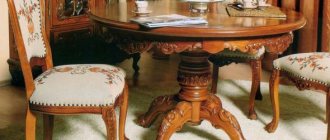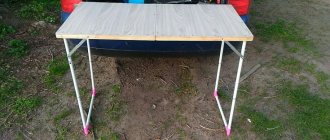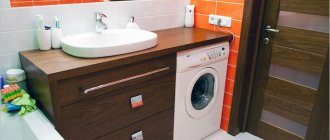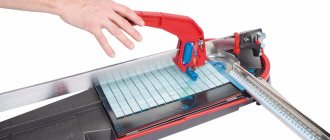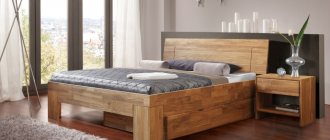History of appearance
In 1970, the Danish scientist Mendel observed and studied the postures of people leading a sedentary lifestyle, office workers, and schoolchildren. Considering the way they sit, he came to the conclusion that the most comfortable position for sitting on a regular chair is to tilt the body forward relative to the pelvis. It is this constantly repeated body position that leads to curvature of the spine and other back diseases.
For many decades, scientists have been trying to find a design that would fully meet all the requirements.
From this, he designed a chair whose seat was tilted downward by 15 degrees. This structure helped maintain correct posture, but had its drawbacks. A person sitting on such a chair constantly rolled off it.
The most useful chair is one whose seat is located at an angle of 15° relative to the horizontal.
A number of researchers from Norway became interested in Mendel's work and in the course of development, they improved the kneeling chair by inventing a knee rest. Thus, they were able to evenly distribute the load on the buttocks and knees, and the spine began to serve as the center of gravity. The body of the person sitting reflexively straightened at the slightest tilt forward.
The result was a chair with a footrest in a half-bent position, on which one stood with one's knees.
One of the developers of such a chair was the owner of the furniture factory, Peter Opsvik. It was thanks to him that such a chair hit the store shelves.
Product modifications
There is a wide range of different models of kneeling chairs on the market. They can be divided into 2 categories:
- Dynamic. They combine a standard stool or seat with a backrest and a rocking chair. The shape of the base is represented by an arc, due to which you can change the angle of inclination and freely move the center of gravity. The position of the back always remains level. In this group there are almost all options for children's kneeling chairs, because it is very difficult for a child to stay in one position for a long time.
- Adjustable. They imply the ability to change the height of the seat, which is necessary for people of tall and very short stature. The setting can be smooth or stepped. The latter option provides 3–4 possible positions; the first usually uses a gas lift.
Homemade and chemical compositions for cleaning chairs from stains, stages of work
A dynamic chair for correct posture will always have a base in the form of an arc. Adjustable models have several options. The support of the most budget product will be represented by ordinary legs or slats. More expensive modifications are equipped with rubberized rollers. They provide mobility, allowing you to move around the room without getting up from your chair. Additionally, wheels make heavy kneeling chairs easier to move.
Dynamic
Adjustable
Therapeutic effect
The knee orthopedic chair model allows you to adjust the seat height, adapting to everyone. With a correctly adjusted chair, the load is distributed approximately 60 to 40. Of this, 40 percent of the load goes to the knees and only 60 to the pelvis. This allows you to significantly relax your back muscles and take a comfortable position without tilting your body forward. Those. You will feel comfortable sitting on such a chair with a straight back.
A feature of the kneeling chair is the redirection of the load from the lower part of the spine to the muscles of the legs, while maintaining a vertical position of the back, the shoulders remain straightened.
Doctors and orthopedists advise purchasing such a chair for schoolchildren and students who have to spend a lot of time sitting in class.
Since its inception, when the chair had only a seat and a knee rest, its design has acquired many innovations.
Step-by-step instruction
The process of manufacturing an orthopedic chair with a knee rest is not accompanied by any particular difficulties. However, in order to prevent even minor errors from occurring, it is important to follow the step-by-step instructions:
- from the prepared bars you need to cut the blanks, observing the dimensions indicated in the drawings;
- attach the transverse bars to the lower support, which acts as legs in the structure;
- a single bar is installed on the back side of the backrest, connected to the seat support;
- grooves are cut out on the bar, with which you can adjust the height;
- a base is attached to the seat on which the knee rest will be attached, so that it protrudes slightly forward;
- a jumper for the grooves is installed on the back;
- use a jigsaw to cut out two rectangular figures from plywood (the first will be used to construct a seat, and the second - a footrest);
- two pieces of foam rubber are cut out and glued onto the blanks;
- To give the finished look, the seat and footrest are covered with upholstery fabric.
Experienced craftsmen recommend pre-gluing all joints and then securing them with bolts. Such simple actions will increase reliability and give the structure additional strength. It is recommended to additionally tighten the support legs with corners.
When the chair is completely constructed, all wooden elements are coated with furniture varnish or paint, as in the photo.
To create a kneeling chair with your own hands, it is useful to watch the video and carefully study the drawing with the indicated dimensions. When assembling the chair, you should follow the step-by-step instructions exactly.
Related publications
- Read
Making a simple weed killer
- Read
Making chair covers - quickly and easily
- Read
DIY dishwashing liquid
- Read
How to reupholster a chair
- Read
DIY step stool
- Read
Advantages and disadvantages
Almost no invention is perfect, and even the most perfect design will have flaws and shortcomings.
Pros of a kneeling chair:
- posture improves;
- back muscles are trained;
- the load on the spine is reduced;
- prevention of scoliosis;
- blood flow to the lower body improves;
- the chest straightens, breathing improves;
Models with wheels and a back, with static support and in the form of a transformer, with an arched support that allows the sitter to swing, corset chairs appeared.
Minuses:
- the appearance of pain in the knee joints;
- it takes a period of getting used to;
- feet may go numb;
- possible slipping from the chair;
- it is necessary to adjust the chair for each person sitting down;
- unsightly appearance;
People who use this model of chair for a long time get so used to it that they no longer want to change to a regular one.
The most suitable model is selected taking into account the person’s weight, height, medical recommendations and individual preferences.
Although there are disadvantages, this does not mean that all of them will be relevant to you. Some people with bad knees do not experience discomfort or pain in the joints when sitting on an orthopedic chair with this design. It all depends on whether you distribute the load correctly and what model of chair you choose.
When choosing an orthopedic chair for a schoolchild or a person with musculoskeletal problems, you should pay attention to a knee-type chair.
Manufacturers, in pursuit of originality, come up with their own features that do not always have positive functionality.
The most important thing to remember is that when choosing an orthopedic knee chair, take into account your physiological characteristics: weight, height, chronic diseases.
Its design ensures reflex straightening of the back without stress on the muscles and joints of the spine.
Preparation of materials and tools
Orthopedic furniture is sold in many retail establishments. However, its cost may be so high that not everyone can afford to buy such a chair.
You can take advantage of the alternative offer and build an orthopedic chair yourself. First you need to prepare what you have to work with. The manufacturing process will not be interrupted or delayed if all materials are prepared in advance. The workshop always has tools, but it is still useful to check in advance whether everything is available.
To build an orthopedic chair yourself, you need to prepare:
- plywood sheet;
- wooden blocks (preference should be given to hard wood);
- upholstery fabric;
- soft filler.
It is also necessary to prepare fastening materials. The finished product will look as attractive as possible if you prepare the varnish in advance, which covers the surface of all wooden elements.
In addition to materials, you will need tools:
- pencil for marking;
- electric jigsaw;
- drill;
- a screwdriver (if you can’t get one, a screwdriver will do);
- grinding machine (the grinding process can be carried out manually with sandpaper).
How to make a kneeling chair with your own hands
Despite the fact that the kneeling chair has a simple structure, prices in stores are quite high. Due to the fact that the description of the properties contains the word “orthopedic”, manufacturers artificially and unreasonably inflate their prices.
Sitting on such a chair, the back behaves the same as in a standing position.
You can make such a chair yourself. This does not require any supernatural skills or materials. You can find diagrams and drawings freely available on the World Wide Web. In addition, the kneeling chair you make yourself will correspond to your wishes and body features.
For children, orthopedic chairs with a knee support are simply irreplaceable.
If you have knee pain, you can make the knee support extra soft for greater comfort.
Drawing and diagram
To correctly select a ready-made diagram or drawing, you should carefully read the instructions that come with it.
First of all, having studied the available schemes, think about whether they meet your requirements. Based on them, you can create a drawing that suits you.
Many who want to become the owner of this piece of furniture decide to make a kneeling chair with their own hands.
The drawing must include:
- dimensions of parts;
- fastener locations;
- part with seat height adjustment.
All details must be drawn either in real size, or use scaling, i.e. change the size while maintaining proportions.
It is best to create a scheme with dimensions that will fully satisfy the needs of an individual.
Selecting Tools
Before you start creating an orthopedic knee chair, prepare a standard set of tools:
- Pencil or marker;
- Roulette or ruler;
- Drill;
- Screwdriver and screws;
- Saw or jigsaw;
- Grinder or sandpaper;
- Furniture stapler.
The choice of tools directly depends on the materials from which you will make your chair. It can be made not only of wood and plywood, but also of iron. In this case, you will additionally need a grinder or a metal saw and a welding machine.
Selection of material
- Plywood sheet;
- Hardwood bars;
- Upholstery fabric;
- Foam rubber or other filler;
- Fastening parts;
- Glue;
- Varnish;
- Paint and brushes optional.
Before proceeding directly to the manufacturing process, it is necessary to check the availability of tools and materials.
Most often, at home, such chairs are still made of wood and plywood. In rare cases, metal is used. Large manufacturers, in turn, on the contrary, give preference to metal samples.
Chair making process
In order to properly make an orthopedic knee chair with your own hands, you need to perform all your steps in stages.
- All parts are cut from the bars according to the drawing. Vertical bars: two front and one rear. Horizontal: cross bars (horizontal legs). Part with grooves for height adjustment.
- All places for self-tapping screws are pre-drilled with a drill.
- We connect the individual parts.
- We attach cross bars, they will serve as legs.
- Two blanks are cut out of plywood for the seat and for the knees.
- We glue foam rubber on them and cover them with upholstery fabric.
- We attach the seat at an angle of 15 degrees to the front vertical bars and a support under the knees.
- Cover with varnish.
After completion of manufacturing, visible wooden structural elements are coated with varnish or paint.
It is best to use furniture dowels and wood glue when connecting parts. Self-tapping screws can be used additionally for reliability.
To prevent sagging of the soft parts of the chair, it is recommended to use several types of foam rubber of different hardness, gluing them on top of each other.
Material for orthopedic furniture
In production, chairs with an orthopedic effect are made of metal or wood. The metal construction increases the strength, stability, and service life of the product. Such designs are better adjusted to the height of the owner.
Advice : when used at home, greater preference is given to products made of wood. They fit well into the interior of the room and are lighter in weight than models with a metal structure.
Typically the wooden version is made from solid oak, beech or multi-layer plywood . The following materials can serve as fillers for the seat, back, and knee cushions:
Foam rubber. It is flexible, affordable, and does not cause allergic reactions. Service life is about 5 years.- Latex has elasticity, good porosity, and an antistatic effect that prevents the accumulation of dust. Retains its properties for up to 10 years.
Some more materials are needed:
- wooden blocks made from hardwood;
- plywood sheet;
- metal corners, bolts, screws, dowels;
- wood glue, wood varnish.
Help : orthopedic furniture is expensive, although its design is very simple.
Operating rules
The main goal of orthopedic developments is the prevention and treatment of diseases of the musculoskeletal system. This chair was no exception.
The positive result after its use gives grounds for orthopedic doctors to recommend the knee chair to their patients.
An orthopedic knee chair is recommended both for healthy people who want to maintain their supporting apparatus into old age, and for patients with medical prescriptions.
Of course, it will not solve your problems, but if used correctly, it will greatly alleviate your posture problems.
In order for you to sit comfortably on such a chair, it is important to correctly adjust its height, namely the distance between the knee support and the seat itself.
Correct posture helps restore the natural curves of the spinal column in mild to moderate scoliosis, completely preventing its development in the future.
Also, do not forget to periodically get up from it and do a short walk, warm-up or physical exercise to improve blood flow in the lower extremities.
Kneeling chairs often take some getting used to. Start with 10-15 minutes a day, gradually increasing the time you sit on it. If you feel discomfort when sitting on this chair, and you can’t get used to it, give up this idea. Listen to your body.
Many owners of this wonderful invention recommend alternating its use with conventional orthopedic chairs so that the frequency of loads in the sitting position changes.
Contraindications and precautions
Before purchasing a kneeling chair with or without a backrest, you should consult a doctor: therapist, rheumatologist, orthopedist, neurologist. The design can be used only if there are no contraindications. Otherwise, instead of the expected benefit, existing problems may worsen. It is unacceptable to replace a regular chair with a kneeling one:
- For congenital pathologies of the spine.
- Spinal column injuries of varying severity.
- Degenerative diseases of the hip bones.
- Osgood-Schlatter disease, which is characterized by severe pain.
- Third stage of scoliosis.
Making your own baby high chair and stool
It is also not recommended to sit on your knees if you have prepatellar bursitis and other inflammatory joint diseases. Physical discomfort while using the product indicates a problem. However, the matter may not only be in the general state of health, but also in the wrong approach to choosing a knee chair.
Congenital pathologies of the spine
Spinal column injury
Degenerative diseases of the hips
Osgood-Schlatter disease
Third stage of scoliosis
Photos of 50 design options for orthopedic knee chairs
How to choose a quality chair in a store
When purchasing a kneeling chair in a store, you should find out the following points:
- Is it possible to adjust the seat angle and adjust the distance to the knee pad?
- What is the base - rollers that increase the mobility of heavy weight products, an arc suitable for children, or regular legs?
- Does the manufacturer have quality certificates guaranteeing the safety of the materials used?
- What are the frame and upholstery made of? Metal lasts longer than wood, and jacquard and matting are more durable than leatherette.
- How long ago did the manufacturer enter the market, what do real customers say about its products?
Each kneeling chair comes with detailed instructions for use. It also usually indicates how to properly adjust the seat depending on the person’s build. It is important to take into account the maximum permissible values. The height range is quite wide: from 1.2 to 1.8 m.
You need to try the product in the store. In addition to correct body position, you should pay attention to the degree of comfort. When purchasing a chair equipped with a backrest, you need to find out whether it is possible to adjust its height and angle of inclination. By choosing the ideal model and knowing how to sit on a kneeling chair correctly, you can improve the condition of your spine in just 1 month.
Check the adjustability of the product
Find out the quality of manufacturing materials, study information about the manufacturer
What is Doctor Cypress: description, types, characteristics, principle of action
Dr. Cypress is one of the most popular devices for training the muscular corset of the torso and back. The device consists of a wooden seat standing on a round stabilizer (the seat and stabilizer are connected by a support).
The principle of operation of the device: the seat is supported on a small leg (support), which is the center of gravity. Sitting on such a seat, the human body will constantly shift slightly in different directions, which is why the user reflexively straightens his back (to stabilize the position).
Through constant reflex alignment, the back and abdominal muscles are trained. At the moment, there are 4 types of devices: Economy (budget option), Mini, Standard (Classic) and Luxury.
Dr. Cypress Lux
The main differences between the models are the surface finish and the strength of the entire structure. Some models are designed for a user weight of up to 80 kilograms, others can withstand up to 120-140 kilograms.
What is it used for and what effect does it give?
It is not very wise to use the Doctor Cypress device for existing spinal diseases. Yes, it can help, but the effectiveness will be very low. The situation is different with the prevention of back diseases: in terms of preventing diseases, Doctor Cypress is extremely effective.
Most spinal diseases in modern humans are associated with physical inactivity and, as a consequence, detraining of the body. The back muscles should support the spine, not just by removing excess load from it, but also by aligning it, maintaining it in the correct position.
In a physically undeveloped person, the muscles are not able to fully perform this function, since they are greatly weakened. Using the Doctor Cypress device, you can restore muscle strength and increase the endurance of the back brace.
In this way, you can avoid postural disorders, the development of osteochondrosis and scoliosis, and other deformations and pathologies. The device also protects the user from the development of intervertebral hernias and protrusions.
Indications for use
The main purpose of the Doctor Cypress device is the prevention of various diseases of the musculoskeletal system (mainly the back). It can also be used for existing diseases, for their treatment (actual and symptomatic).
Doctor Cypress Economy
Indications for use of the device:
- Degenerative-dystrophic diseases of the spine (spondylosis, osteochondrosis).
- Spondylolisthesis (loss of one or more vertebrae).
- Scoliosis at the first and second stages.
- Uncomplicated and sluggish ankylosing spondylitis (Bechterew's disease).
- Poor posture, pathological kyphosis or lordosis, spinal deformities (including the development of a keeled chest).
- Intervertebral hernias and protrusions (except for sequestered hernia).
- Radiculitis.
- Osteopenia (not to be confused with osteoporosis).
- Initial stages of hemorrhoids or prostatitis (especially stagnant, associated with impaired venous outflow in the pelvis).
Who will benefit first?
The main candidates for purchasing the Doctor Cypress device are people leading a sedentary lifestyle . In developed countries there is an overwhelming majority of such people. This includes office workers, accountants, doctors, IT specialists, and so on.
They require such a device first of all, since the development of the muscular corset leaves much to be desired. But such a device can also be recommended for athletes, since high physical activity does not at all guarantee a strong back muscle corset.
In addition, Doctor Cypress allows you to remove excess stress from the spine, including eliminating muscle spasm. This means that it can be shown to workers in heavy physical labor (loaders, construction workers, general workers, factory workers).
There are also children's models of Doctor Cypress (or the adult "Mini" model), which can be recommended to schoolchildren for the prevention of typical childhood diseases (children's scoliosis, osteochondrosis and postural disorders).
Review of the device Doctor Cypress (video)
Where is it sold and how much does it cost?
Which stores sell the Doctor Cypress device and how much does such a simulator cost? The easiest way to buy this device is in online stores. There you can read reviews, and there is also a full range of products in this series.
You can also order the device from alternative medicine pharmacies or rehabilitation accessories and devices stores. Sometimes Doctor Cypress is sold in medical equipment stores.
Support leg of the Doctor Cypress device
The price of Doctor Cypress depends on which model you are going to purchase. At the end of 2021, prices are as follows:
- “Mini” model - 1800 rubles ($90);
- Economy model - 2,300 rubles ($113);
- “Standard” model - 2,700 rubles ($132);
- “Lux” model - 3,200 rubles ($156).
Device
The design of a saddle chair consists of a seat, a central leg ending in five arms. Some models are equipped with a backrest and armrests.
Saddle seat
The seat is the central element of such a chair. It is a saddle, the side edges of which are beveled at an angle. In some models, the seat consists of two mirror-symmetrical parts. It is believed that the latter option is preferable for men.
- The pressure on soft tissues is reduced.
- Circulation processes are not disrupted.
- There is no overheating of the groin area.
The product has levers for adjustment. With their help, they change the angle of the saddle and the position of the halves relative to each other.
The upholstery material is high-quality leatherette. We are pleased with the wide selection of colors and textures. High-density foam rubber is used as filler.
Back
Back is an optional attribute. Most designs do not have it. However, if you have it, you can give your back muscles a rest from time to time. The ergonomic shape of the back helps to securely fit into the chair. Manufacturers offer 3 configuration options, which will allow you to choose the most convenient model.
Metal elements are used to secure the backrest, which are securely connected to the central leg under the seat.
Elbow support is provided by soft supports located on both sides of the backrest.
Base
The base is made in the form of a cross with five beams, each of which ends in a metal roller with a rubber rim. This ensures smooth and silent movement without damaging the floor covering.
The crosspiece with a diameter of approximately 50 cm is made of metal and can withstand significant loads. A protective coating of chrome or plastic is applied on top.
The height position is changed using a gas lift. To do this, it is enough to press a certain lever to adjust the chair in accordance with the height of the person sitting. The correct position is considered to be one in which the elbow of the bent arm is completely located on the table top.
The lifting device is hidden in the support and is a metal cylinder 13-16 cm long. The internal volume is divided into 2 reservoirs, between which there is a valve.
Some chairs are equipped with a mechanism for rotation around the central axis by 360°.
The health of the spine directly affects a person’s overall well-being, which is why it is so important to do everything to preserve it. An orthopedic chair saddle will provide invaluable assistance in developing and correcting posture and will restore tone to the back muscles.
What does such a chair provide?
Firstly, its task is to prevent the occurrence of pathologies and various kinds of ailments of residents of megacities, and secondly, a passive therapeutic effect and correction of existing pathology (regardless of the stage).
· Normalization of blood circulation in organs and tissues;
· Restoration and maintenance of symmetrical posture;
· Minimizing the force of static loads on the muscles involved in holding the body while sitting;
